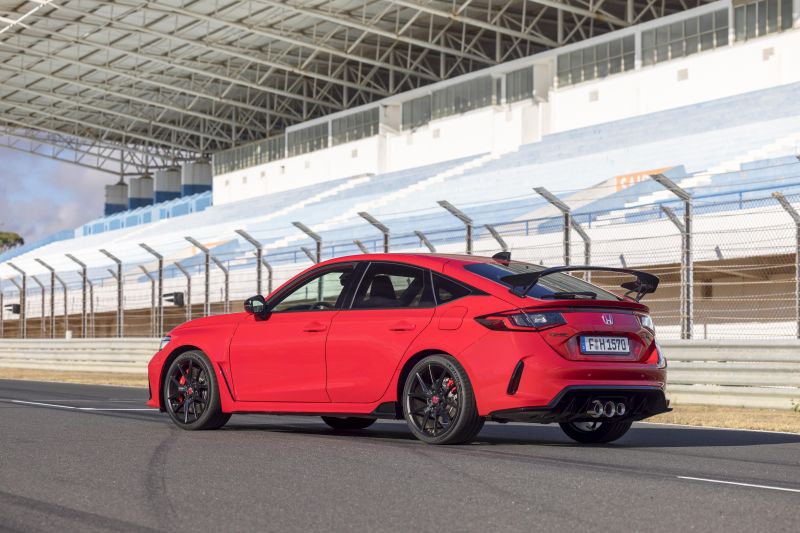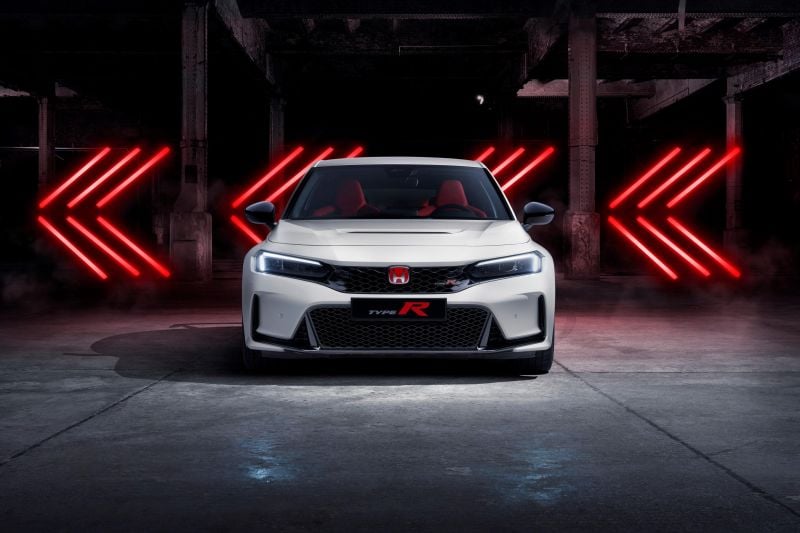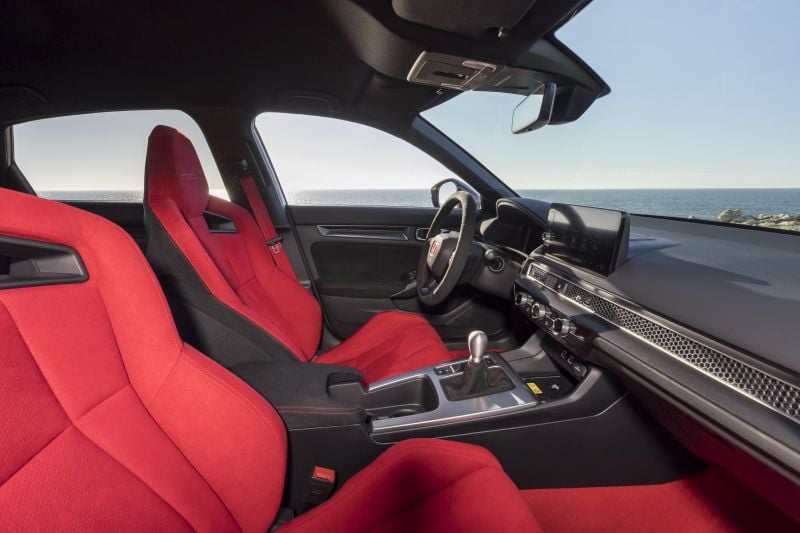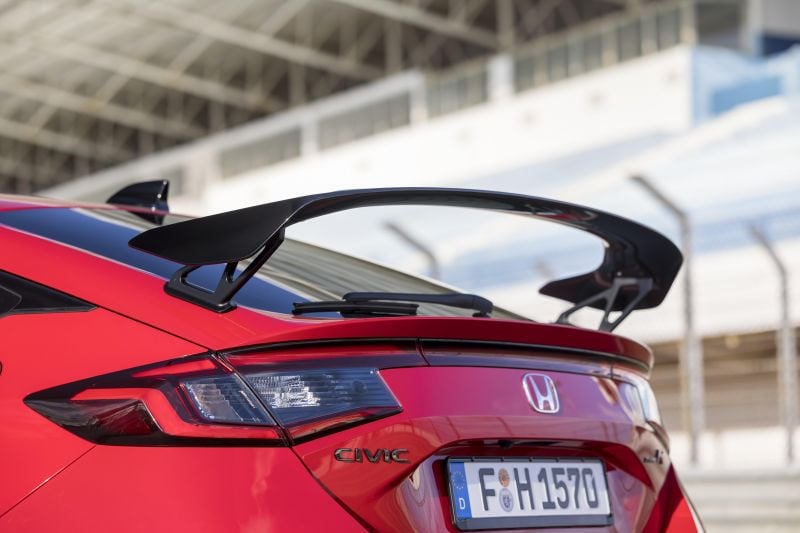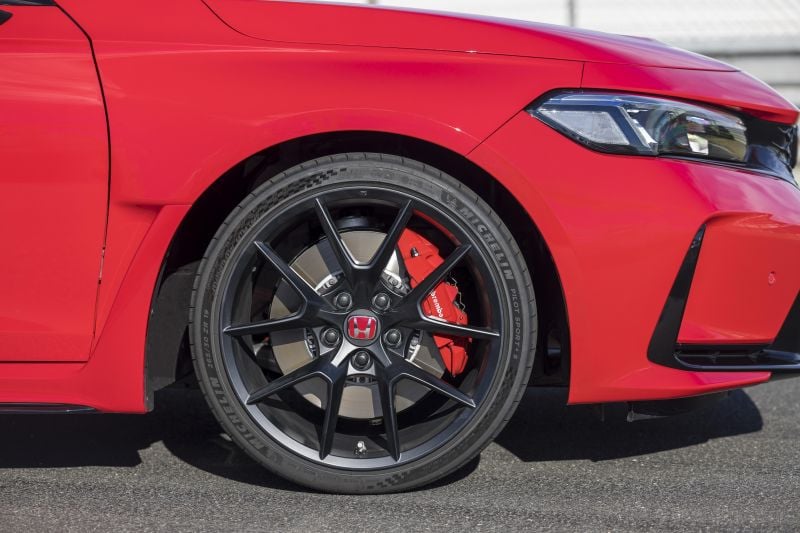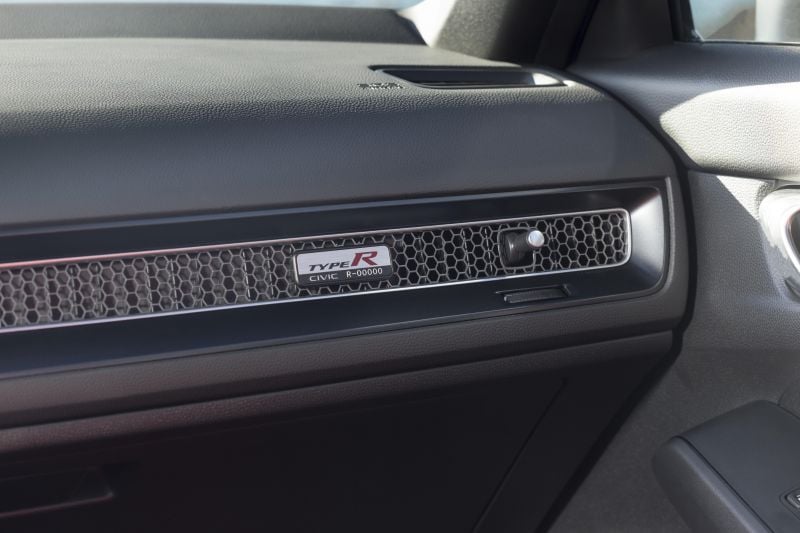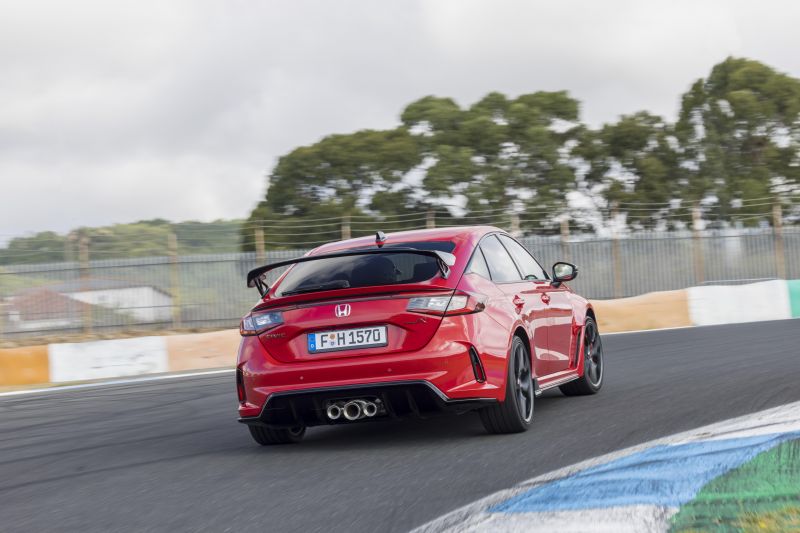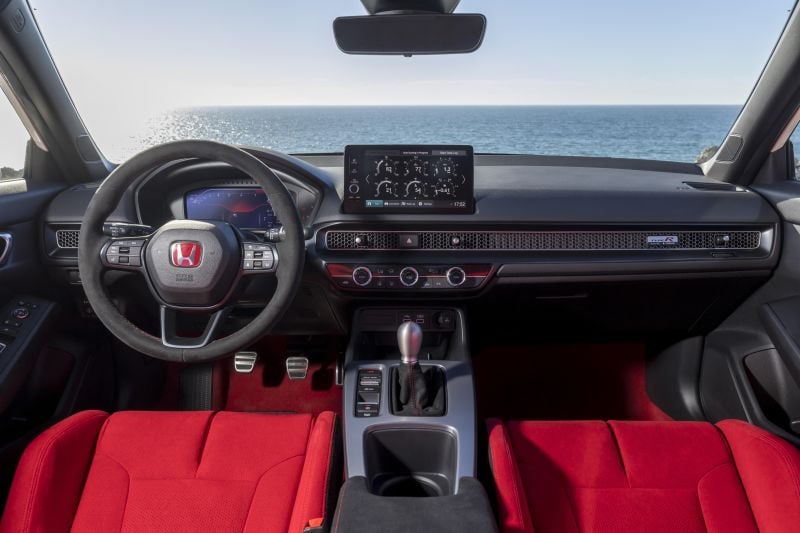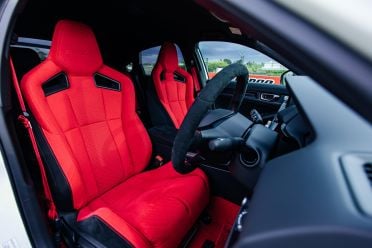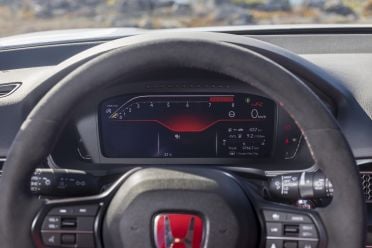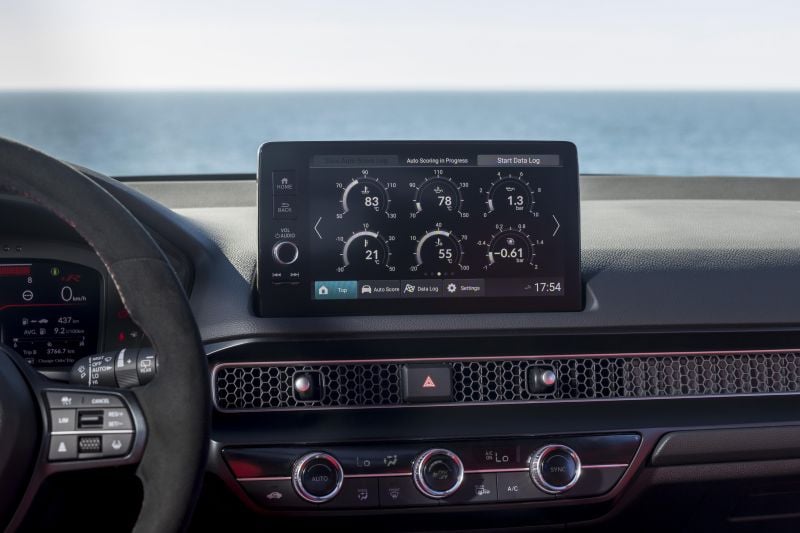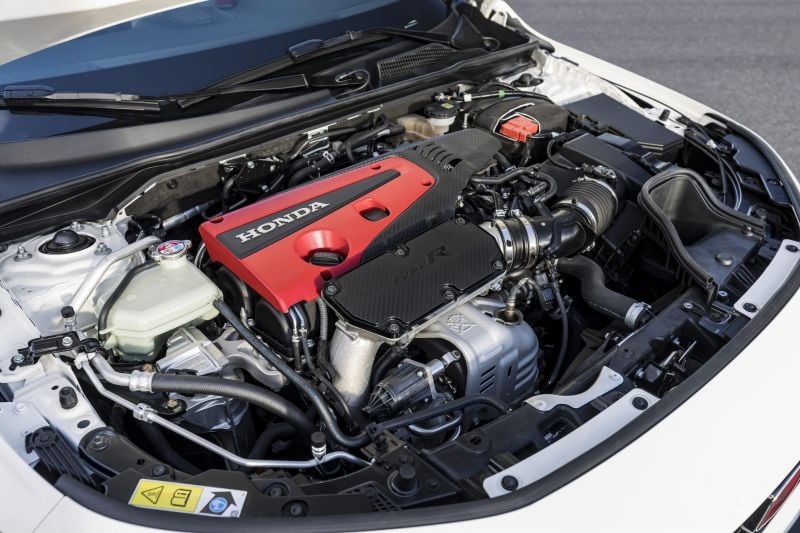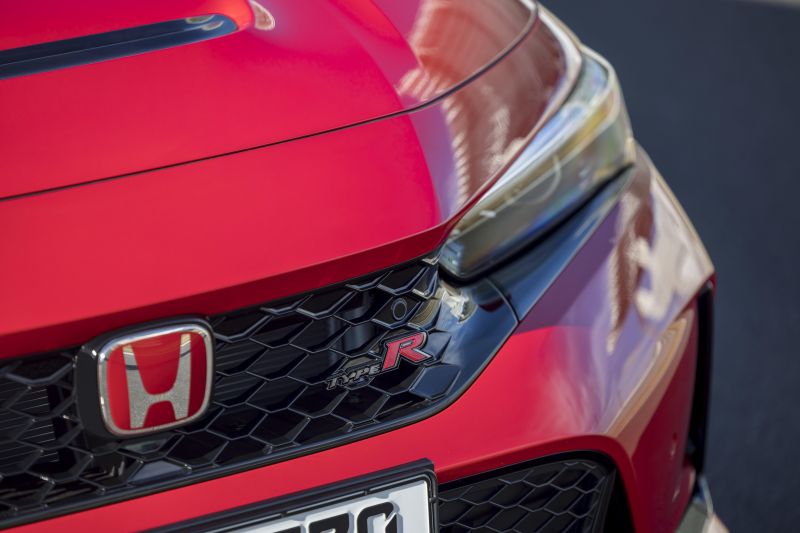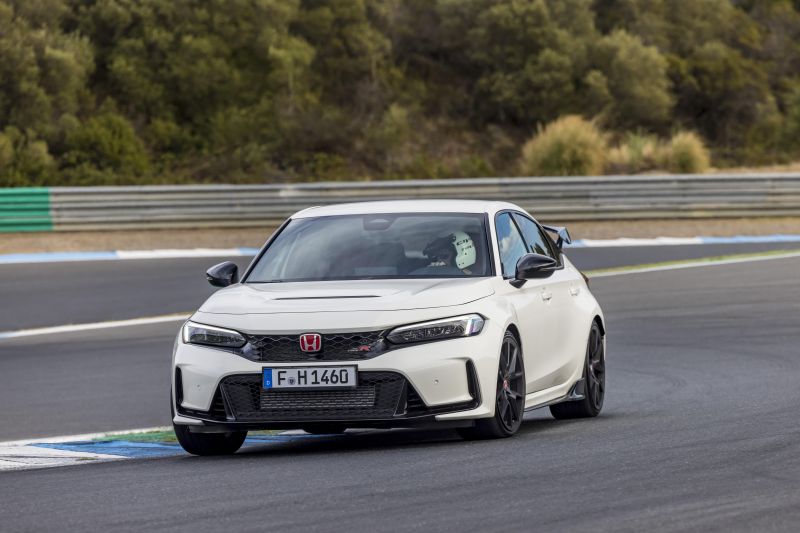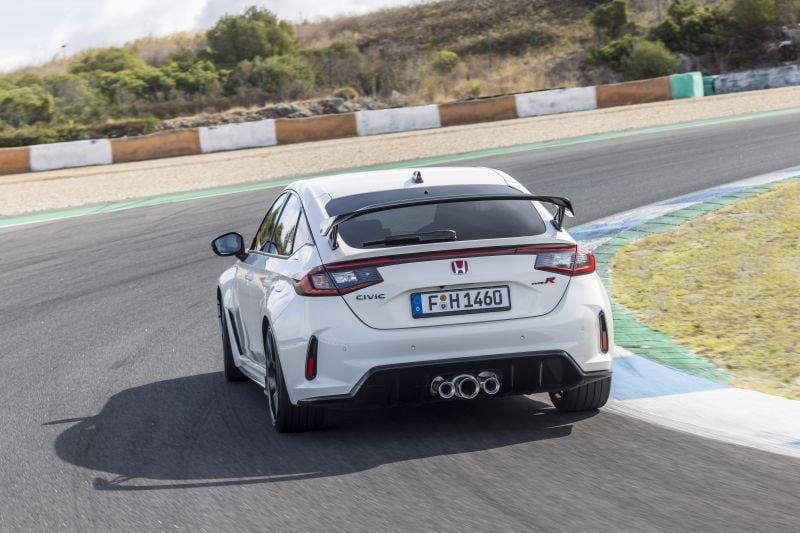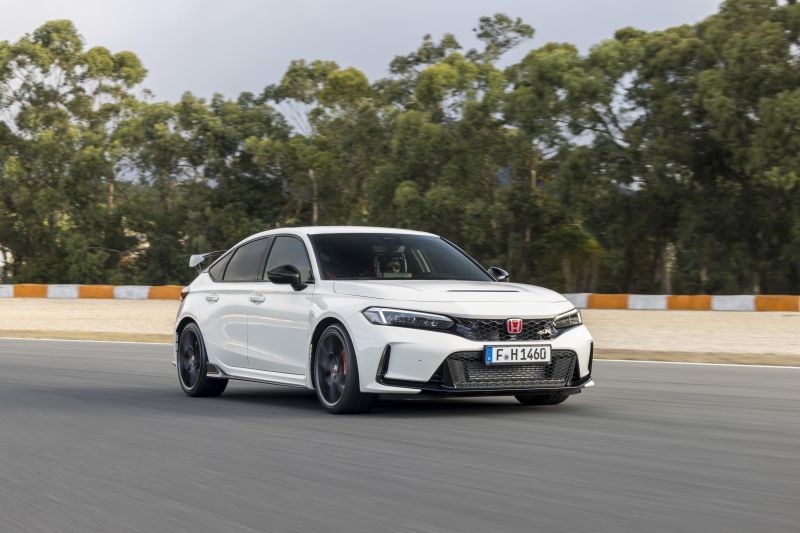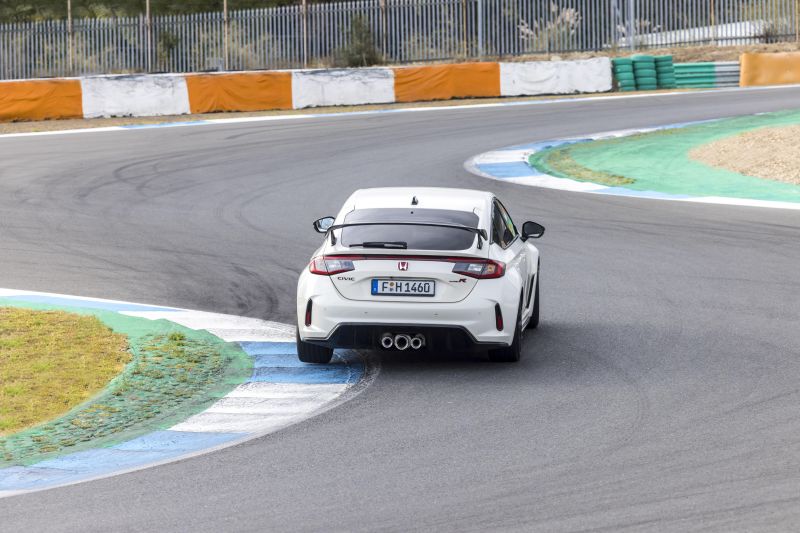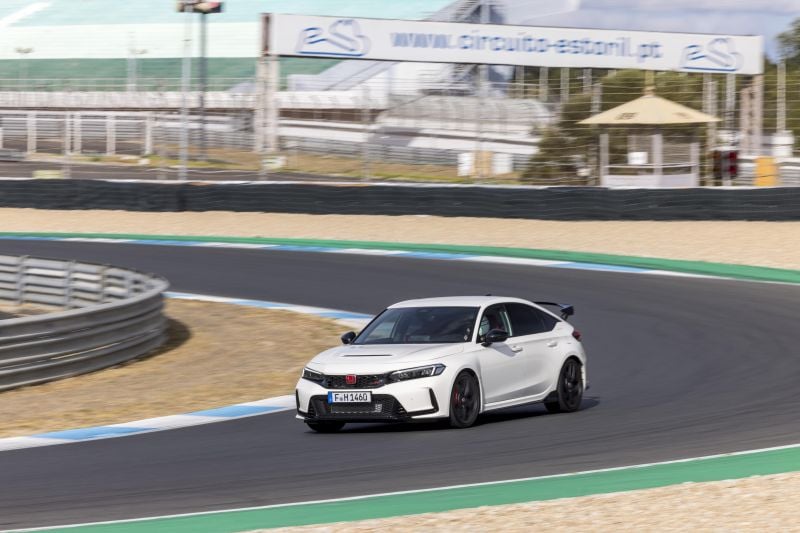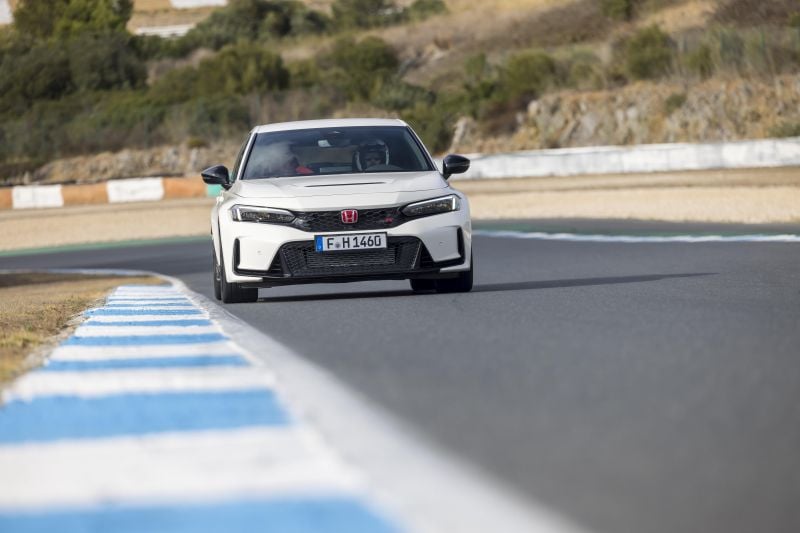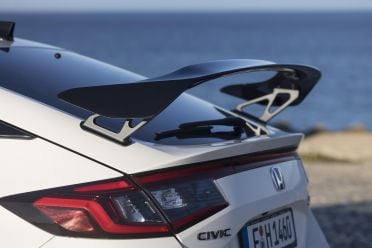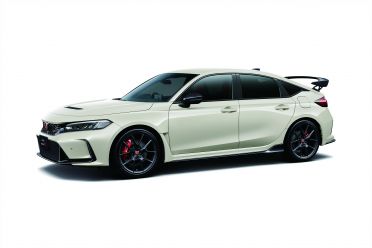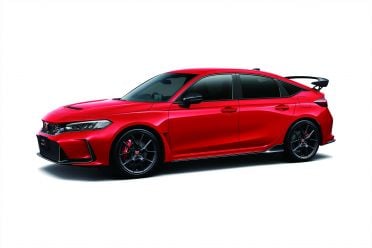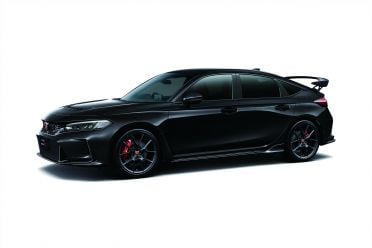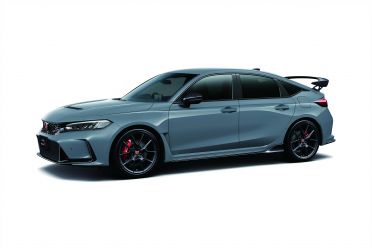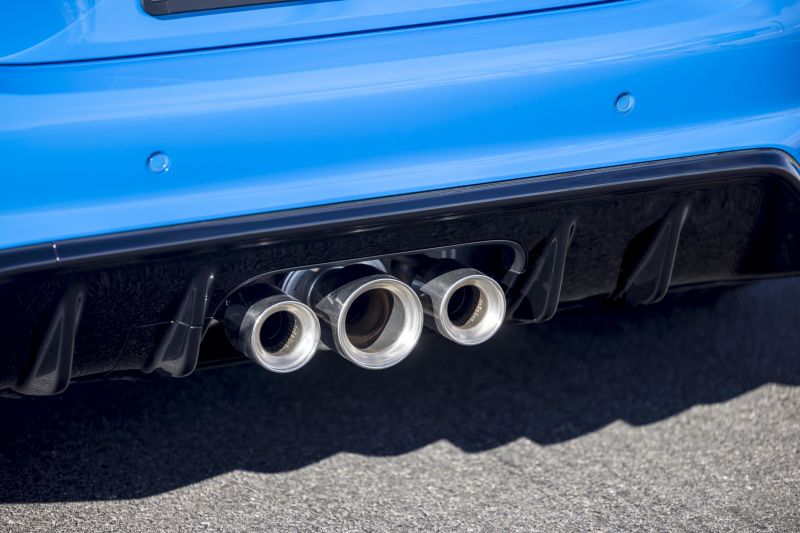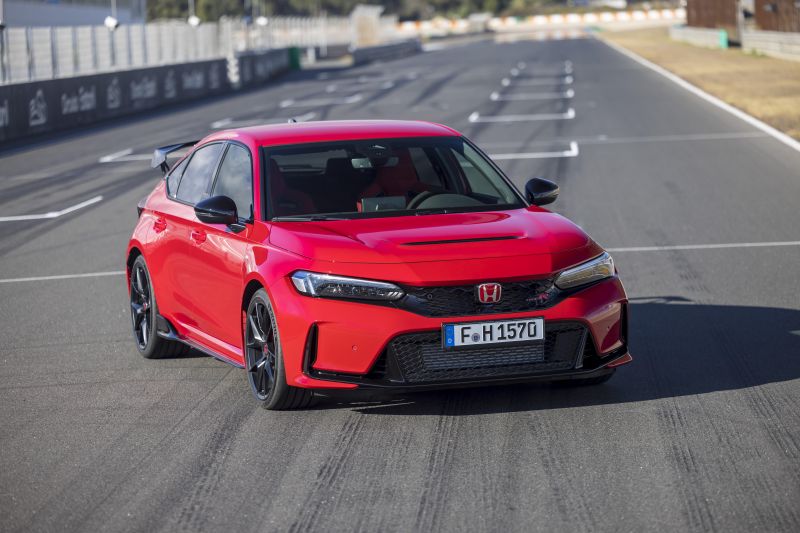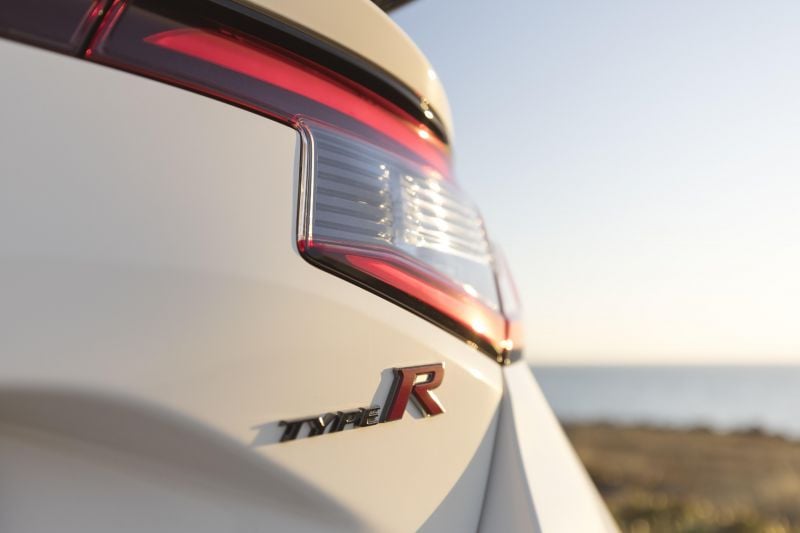Unlike some, I didn’t have a strong connection with Honda’s last Civic Type R hatch, or even a desire to ever drive one, primarily because of the outrageously-styled body kit that inflicted it with an overtly cartoonish profile.
That was early 2018, before I ended up in the driver’s seat of a Championship White FK8 Type R and proceeded to systematically take apart a number of the more challenging sections in the Victorian high country in less than ideal conditions – it was a bit damp and a bit sketchy.
Just to make sure we didn’t drink too much of Honda’s Kool-Aid, we brought along two of its toughest rivals; the Ford Focus RS and Renault Megane R.S.
The Focus was my preordained favourite for its added poke and all-wheel drive stickiness on damp surfaces, while the Megane wasn’t far behind in the power stakes but also gained all-wheel steer, which tended to made light work of the endless left-right-left combinations in that region.
But after hours of thrilling action behind the wheel of three of the world’s most accomplished hatches, none felt quite so connected or gave anywhere near the kind of seat-of-the-pants feedback as the Civic Type R delivered.
It was an immersive driving experience delivered through every control in the car, with levels of steering feedback and a shift action more pronounced that some full-blown race cars I’d driven. To me it was simply peerless in this class.
I wanted one, but stopped short of putting a deposit down on a Championship White example given I was already older than the target market and didn’t think I could deal with that oversized rear wing, or indeed, the level of in-house sledging I would have to endure. I even called Honda to ask if I could delete it at factory level.
Nevertheless, it was an unforgettable driving experience that has overshadowed anything in the class I’ve driven since. Until now.
Meet the sixth-generation 2023 Honda Civic Type R, now based on the eleventh-generation Civic hatch and packing more firepower than ever before in a somewhat restrained body design compared with the previous iteration. And all the better for it, I say.
It’s still got a big rear wing and those trademark triple trumpet-like exhaust tips, along with pumped-up guards and aero, but this time it doesn’t look like a boy racer’s dream or a modded JDM from those early Fast and Furious movies.
It’s much more tempered in its exterior treatment this time round, and that’s guaranteed to appeal to a wider cohort of dedicated manual-driving enthusiasts – including me.
On paper, it’s got all the signs of an engineering masterpiece when you consider how effective the last one was. Everything from aerodynamic efficiency down to the flywheel weight and rev-matching speed have been tweaked for performance through better efficiency.
It’s as if this new Civic Type R has been forensically dissected piece by piece, and put under the microscope in the interest of the smallest upgrades and the fastest lap times at any one of the world’s most iconic proving grounds.
Listening to Ko Yamamoto – technical advisor for Honda Motor Europe – explain every engineering gain on the new version takes a while but it’s fascinating nonetheless. You get the impression this new Type R is a product of obsession.
It’s longer, lower, wider and with a longer wheelbase for improved on-road comfort and dynamic balance, they tell us. The hip point has also been lowered, as has the centre of gravity.
The chassis, while not completely new, is stiffer with torsional rigidity up by 15 per cent through more extensive use of adhesives – nearly four times that which was applied to its predecessor.
The previous Type R introduced a resin-made bulkhead, an aluminium bonnet and more high-tensile steel, while the new version also brings in a resin tailgate – reducing its weight by 20 per cent.
And while there might seem to be far less going on up front with fewer of the shenanigans of its predecessor, there’s actually 48 per cent more airflow through the front bumper and grille – primarily for improved engine cooling.
Brake cooling has been improved but not through any changes to the hardware (it didn’t need it) but by sacrificing fog lights for dedicated cooling ducts; capable of reducing brake temperatures by as much as 60 degrees celsius after five all-out laps of the famed Suzuka race circuit in Japan, where it holds the lap record for front-wheel drive cars.
Down back there’s still a big rear wing, but it’s less conspicuous than the previous iteration because is sits lower and wider, and it makes more downforce (90kg at 200km/h). Importantly, it doesn’t restrict rear vision either.
Even the blipping performance as part of the rev-match system is now 10 per cent faster, while the front camber rigidity is up by 16 per cent for more composed cornering at the limit along with wider high-performance Michelin tyres.
Like most things on the previous Type R, there wasn’t a lot wrong with the steering feel, rack ratio and overall precision. But they too have gone under the microscope with significant gains in on-centre response and stability.
With most performance carmakers are going for larger, more aggressive wheel setups, Honda has fitted smaller 19-inch wheels. Not just any wheels – these are called ‘Reverse rim’ and are paired with Type R’s new suspension geometry. It comes down to better ‘deformation stability’, Yamamoto tells us.
Like the platform, not everything is brand new. The Type R’s 2.0-litre turbo-four is another carried over component but for the multitude of changes that do a lot more than just boost power and torque. There’s better cooling, a new turbocharger housing with optimised blades that reduce inertia, and the exhaust system is straighter for better flow and reduced back pressure.
It all bodes well for our extended track session at Portugal’s challenging Estoril circuit, particularly with foreboding clouds and wet patches. Nevertheless, there’s a suite of new active safety systems on board, and a revised data logging system that recognises certain race tracks for race days Type R owners will get to relish.
I’m also of the age where bright red seats and floor mats might be considered over the top, but it just works and I wouldn’t hear of any such changes to the trademark Type R ambience one or two colleagues suggested. It’s a celebration of the red on the Rising Sun.
Otherwise, the cabin mirrors the latest Civic hatch bar those specialised bits like the Alcantara steering wheel and the celebrated aluminium-billet shifter.
Like most highly specialised forms of engineering, improvements are small and many, but generally add up to something far greater the sum of those parts. The Civic Type R is precisely that car.

How much does the Honda Civic Type R cost?
Honda will open orders for the Civic Type R on December 1, with the first customer deliveries scheduled to begin in February 2023.
However, there are already more than 4000 expressions of interest for the car, and that’s before most people have even seen it in the metal, let alone test driven it.
It’s priced from $72,600 drive-away, or $25,400 more than the base VTi-LX. For reference, the outgoing model closed out its run with a price tag of $54,990 before on-road costs (under $60,000 drive away).
It’s also Honda’s halo car and the final variant to join the local 11th-generation Civic range, slotting in at the top above the upcoming e:HEV LX hybrid set to land in Australia early 2023.
While the Ford Focus ST has been discontinued locally and the Renault Megane R.S. is living on borrowed time, the new Type R still has a handful of rivals.
These includes the bargain-priced Hyundai i30 N, starting from $46,200, and the Volkswagen Golf GTI ($54,990) and R ($65,990) – all prices exclude on-road costs, however.
The Type R’s more premium pricing also pushes it closer to the likes of the Audi S3 ($70,800) and BMW M135i xDrive Pure ($67,900).
More expensive still is the Nissan Z with its twin-turbo six, priced from $82,780 drive-away in either manual or auto, while the Toyota Supra is priced at $96,251 drive-away using a Sydney postcode.
What is the Honda Civic Type R like on the inside?
If red isn’t your favourite colour you’re probably going to have an issue with the latest Type R. Inside, it’s a sea of red.
Not just any red, mind, very bright red, with trademark red bucket seats and seemingly redder floor mats and carpets. Even the seat belts are red.
You’ll get used to it from the moment you lower yourself into some of the best seats in the business. The bolsters are proper race-level types but the entire seat is so thickly padded they also feel luxurious at the same time.
They’re also quite appealing with Type R embossed on the integrated headrests, while black suede-like side panels and shoulder gaps go some way to offsetting the lashings of red suede that fill the cockpit up front.
The entire roof liner is the same soft suede-like material, as is the two-seat second row – another Civic Type R trademark carried over to the new-generation model.
I’m normally not a fan of Alcantara steering wheels, unless you’re on track and wearing gloves, as they’re too hard and uncomfortable. That’s not the case with the perfectly round version in the Type R.
It’s the same suede-effect material as the seats and lightly padded for excellent grip and comfort for road and track.
Ergonomically, the Type R is perfection. The alloy-billet shifter is something to behold and perhaps better than anything Porsche has ever done – GT cars included. Just touching it will mesmerise you, let alone the shift action itself. We’ll get to that part soon enough.
The rest of the layout is typical eleventh-generation Civic. That is to say semi-premium with plenty of soft-touch materials and interesting accents like the honeycomb vent strip (matches the grille) across the dash with ‘cool’ alloy-crowned joysticks that control air-con direction, along with a numbered ‘Type R’ build badge.
The instrument display is all digital and configurable, depending on which drive mode is selected. It’s not one of those crystal-clear screens you find in German makes (including Volkswagen) but the graphics in Sport and +R showing gear position and shift lights work well.
There’s also a 9.0-inch infotainment display with fast responses. It’s excellent when using wireless CarPlay.
The triple HVAC dials are also nicely bevelled and good to the touch with just enough metallic accents to set off the plastics.
I’m not really a fan of the alloy-effect material that adorns the centre console – polished alloy would be a better choice here or even some carbon fibre.
There’s plenty of room for keys and phones ahead of the shifter, along with two cupholders, USB-A ports, and a wireless charging pad.
The rear seats (remember there’s room for two only) also get two cupholders but no centre armrest. Probably not ideal for longer trips, nor is the lack of rear air vents, but rear legroom is decent as is headroom.
There’s no automatic tailgate but it’s light enough not to present any issues. Luggage space is 410 litres behind the rear seats, expanding to 1212 litres when folded flat. We crammed three medium-size suitcases in the space.
What’s under the bonnet?
The Type R is powered by a turbocharged 2.0-litre four-cylinder engine with 235kW of power and 420Nm of torque, up 7kW and 20Nm on the outgoing model.
It can go from 0-100km/h in 5.4 seconds, while top speed is 275km/h. The previous Civic Type R needed 5.8 seconds.
Like previous versions, it’s paired with a six-speed manual transmission – arguably one of the best ever designed, with zero play thanks to refinements to the shift link mechanism.
On the surface it’s a carry-over motor from the previous FK8 Civic Type R, but plenty of revisions feature beyond the extra poke.
The turbocharger housing is smaller and more efficient by three per cent thanks to the changes to the shape and number of the blades, which has also reduced inertia by 14 per cent.
There’s a wider exhaust intake with 10 per cent more airflow, and improvements to the intercooler with reduced pressure loss. The exhaust itself is straight through with a 13 per cent gain in exhaust flow, to provide quicker engine response.
How does the Honda Civic Type R drive?
There’s no powered driver’s seat or steering wheel adjustment, so it takes a few minutes to get your seating position just right before a full-blown track assault at the Estoril Circuit in Portugal.
The default drive mode is Sport but we’ve dialled up +R, which gets its own dedicated button that automatically brings up the rev counter with shift lights at the top, as well as a large gear indicator. Perfect for track work.
Hit the start button and there’s no real fanfare like some of Type R’s rivals – the Hyundai i30 N in particular. I don’t really miss it to be honest. The Type R needs no introduction in that regard. It’s a more specialised machine.
It’s been years since I’ve been at Estoril – the last time was the launch of the first all-wheel drive BMW M5.
Thankfully, I’ve got German race driver Thomas Neuman riding shotgun to help me out with track familiarity and gear selection. It’s fractionally more tricky driving a left-hand drive car with a manual transmission given you’re shifting with your right hand and not the usual left.
Like all the major controls in the Type R though, the clutch feels beautifully linear and the take up is early, as I slip it into first and head out of pit lane and onto the track proper.
The shift action is ultra-precise, but also smooth as silk. It doesn’t matter if you go from first to second, third to fourth or even fifth down to third, it’s always exactly the same action and feel. Super smooth but also mechanical at the same time.
Not even the Porsche 991 Speedster feels this precise and that was my all-time favourite manual box before the Type R experience.
There’s almost no effort required, so there’s need to rush the shifts. It happens quickly, regardless.
Fifth is our top gear at Estoril in the Type R, and that’s going full-tilt down the main straightway hitting 220km/h (Tommy was nudging 230km/h).
Those lucky enough to get into the new Type R will relish the super-fast throttle blips with each and every downshift. There’s none better or none faster than what Honda has created here, at least none that I’ve driven.
There’s a tight left-hander at turn six where you go drop two gears from fourth down to second and I can’t tell you how easy that was – left-hand drive and all.
The steering, too, is masterful. Quicker than before and a variable-ratio system, it feels completely linear no matter how much lock you wind on.
Like the shift mechanism, things never feel frantic even if you miss an apex and try to make up for it with extra arm twirling.
The feedback is next level. If the tyres even hint at scrubbing because you’re carrying too much pace in the turn, you feel it before it happens. Every time. There’s only a handful of cars in the world that offer this level of feedback.
And forget about torque steer. There is none on track. Even in the hairpins and even if you jump the gun and get on the throttle too early and too aggressively. It’s engineering sorcery at that point.
It’s a sweet engine too. Eager to rev out to 6500-7000rpm but without any dramatic moments of turbo boost. In fact, you’re barely aware there’s a turbo at play at all. It’s so smooth in its power delivery it’s also easy to forget just how quickly you can hustle the Type R.
Tyre width has grown by 20 millimetres to 265/30s, but they’re also Michelin Pilot Sport 4 S units, and you won’t quite believe the levels of grip at your disposal.
Honda has also increased camber rigidity by 16 per cent and the result is a car that wants to launch a full-blown assault on each and every corner.
It’s uncanny, but the Type R doesn’t seem to pitch or roll regardless of the loads, so it’s easy to get greedy sometimes and end up braking too late or carrying too much speed in the corners. It’s no biggie, the car is very forgiving.
Each session was at least five laps and the braking was hard, but there’s no fade. Not even a bit. You can late brake all the time and rarely will you get into trouble. Pedal feel is amazing. Sure footed, but very powerful and never grabby.
Even in its stiffest +R setting the adaptive suspension makes light work of several kerbs you can hit at Estoril. There’s no nasty side effects from the chassis – just loads of compliance to cushion the bumps, yet giving nothing away in the handling department. Remarkable, really.
We also got the chance for a brief on-road excursion from the track to the Lisbon airport, just to prove Type R’s suspension could also deal with some fairly horrendous surfaces including old tiled roads and pothole-inundated side streets. That was in Sport.
Dial it back to Comfort and you might as well be in a regular Civic. More sorcery here too.
What do you get?
Civic Type R highlights:
- Blind-spot monitoring
- Rear cross-traffic alert
- Traffic sign recognition
- Intelligent speed limiter
- Driver attention monitoring
- Dual front knee airbags
- Active exhaust
- 10.2-inch digital instrument cluster (customisable)
- Wireless phone charger
- Wireless Apple CarPlay
- Satellite navigation
- Ambient lighting
- Auto-retractable exterior mirrors
- Smart Clear Wiper windscreen wiper/washer system
- Acoustic windscreen
- Updated Honda LogR data logger for track use
- Red suede-effect upholstery
- Individual (customisable) drive mode added to Comfort, Sport and +R
- 19-inch matte black reverse rim wheels shod with Michelin Pilot Sport 4S
- Smart clear wiper windscreen washing system
- Ambient lighting (door trim and footwell)
Colours
- Championship White
- Rally Red
- Crystal Black
- Sonic Grey
Is the Honda Civic Type R safe?
The Honda Civic Type R has not been crash tested by ANCAP, nor any other Civic variant.
However, the new Civic e:HEV received a five-star safety rating from Euro NCAP in 2022, which applies to ‘All Civics’ in the European and UK markets – only hybrids are sold there currently.
It scored 89 per cent for adult occupant protection, 87 per cent for child occupant protection, 82 per cent for vulnerable road users, and 83 per cent for safety assist.
How much does the Honda Civic Type R cost to run?
The Civic Type R is covered by Honda’s five-year, unlimited kilometre warranty, along with five years of Premium Roadside Assist.
Service intervals are 12 months/10,000km whichever comes first, with each of the first five services visits costing just $199.
Honda claims average fuel consumption for the Type R on the combined cycle is 8.9L/100km, though, with some spirited driving back to the airport we saw 11.1L/100km, which is actually quite staggering given its performance.
CarExpert’s Take on the Honda Civic Type R
There’s no denying the new Civic Type R is vastly more expensive than it ever was. Certainly more than most people were expecting.
After all, it’s based off the regular Honda Civic, and that’s no bad thing. But this is truly an exceptional performance car – perhaps the best thing Honda has ever produced, outside of the original NSX.
It’s by no means the quickest hot hatch around either, but it is one of the best driver’s cars I’ve driven, regardless of price. It’s also one of the easiest performance manuals you’ll ever drive – on road or track. It’s just as good and just as much fun on either.
It’s also a perfectly good family car or daily commuter, though I guess it has to be docked for only seating four not five. But that’s a Type R trademark – buy a regular Civic if that’s your beef or better still, wait the Civic e:HEV that’s just around the corner.
The Civic Type R is an attainable engineering triumph and a far greater achievement that the sum of all its incremental revisions. How they will ever better this thing, I have no idea.
Click the images for the full gallery
MORE: Everything Honda Civic





